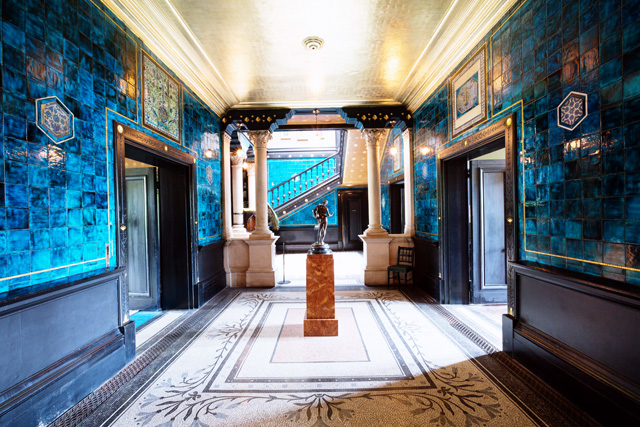
Leighton House
Just saying it out loud makes me giddy and dizzy with visual delight. This was top on my list for our visit to London. Our hotel was within walking distance! Their website was the source of much of the info found here and definitely worth a visit. The pictures, sadly, are not mine.Our visit:
I recognized the house as soon as we approached. The deep red brick and distinctive dome truly stood out.

Just past the initial entry we could view his office. Copies of documents and letters were arranged as if he had just stepped out. Leighton House has been lovingly restored. The guide told us that they were able to paint the studio dark sage due to a passing comment in a letter from a contemporary visitor who resided in Australia!

The blue tiles of the Narcissus Hall and staircase were my favorite shade of blue. Pictures (which aren't allowed) simply don't do justice to their vibrant color. Everything was on a smaller scale than I expected. Still very grand and impressive but not unusually large.
Leighton traveled to Turkey in 1867, to Egypt in the following year and to Syria in 1873. On each of these trips he collected textiles, pottery and other objects that were later to be displayed in his house. It was on his trip to Damascus that Leighton collected the tiles line the walls of the Arab Hall. He was also inspired by a 12th century Sicilio-Norman palace called La Zisa at Palermo in Sicilyo.

The Arab Hall was much more intimate and peaceful than I imagined. It was exotic and dazzling. A jewel in the middle of London. It was not fully lit when we visited so the glow of the gold was soft and sleepy.
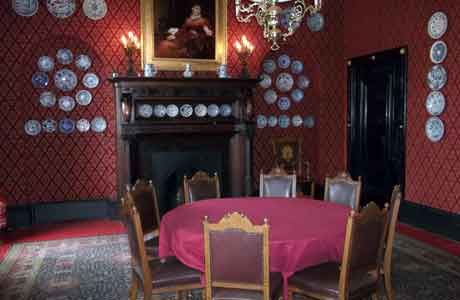
The Dinning Room had his original table cloth and table. The room had been restored based on some red raised velvet wallpaper found under a lighting fixture. The plates had been arranged according to old pictures of the house.
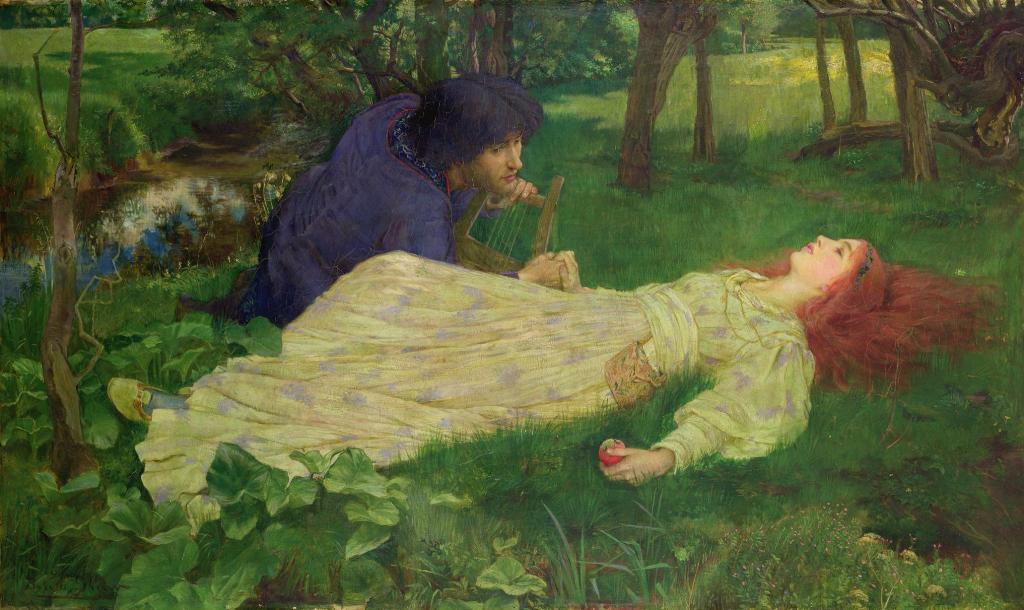
The most notable thing in the dinning room (for me, anyway) was Byam Shaw's painting Silent Noon. I couldn't help but think of Millais' Ophelia (see below) that we would view at the Tate. That dark haired man next to her could reference Rossetti. It also reminded me of Orpheus and Eurydice and the way Rossetti continually tried to call Lizzie back.

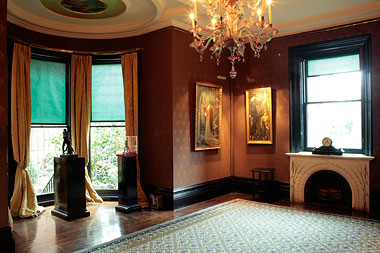
The Drawing Room had a circular ceiling painting by Delacroix and different paintings than in the picture above. By this point we were about to fall alseep standing up so we quietly stepped away from the tour to view the upstairs on our own.

The Silk Room awaits you at the top of the stairs. This is where the main body of the Leighton House's collection hangs. One splendid canvas after another.
I wish I could remember the name of the area. it has hand-carved screens that look out over the Arab Hall. It looked blissful to my jet lagged eyes.

Leighton's studio was bright and large. The large thin black door to the left of the apse was the canvas door to allow his large paintings to be easily removed from his studio.

The opposite end of the studio had a green balcony. It was so beautiful! One of the things that I learned on the tour was that Leighton strongly identified with Michelangelo and had several studies of his artwork in the house.

Leighton lived alone in this magnificent house only has one bedroom (not counting servant's quarters). It was incredibly simplistic compared to the rest of his house.
About Leighton:
Frederic, Lord Leighton Baron of Stretton. He is the only British artist to have been ennobled (happened just before he died)

Cimabue's Celebrated Madonna, 1853 Royal Collection
Queen Victoria bought his first major painting in 1855 - we got to see it at the Victoria & Albert Museum!

Eucharis-A Girl With a Basket of Fruit, 1863, Private Collection
In 1864 he was elected an Associate of the Royal Academy and commissioned George Aitchison to design Leighton House.

The Painter's Honeymoon, 1864, Museum of Fine Arts Boston, Massachusetts
Four years later he is elected a full member of the Academy. Ten years later in 1878 he is elected President of the Royal Academy.

Lily Mason
Leighton was intensely private man. His friend and fellow artist William Powell Frith once said, "I have known Leighton for 30 years, and I don't know him yet." Some suspect that he was gay but some documents have come to light that suggests he may have had a son with one of his models, Lily Mason. The child was also named Frederic and reportedly looked like Leighton who provided a regular allowance to the boy. Read more here.
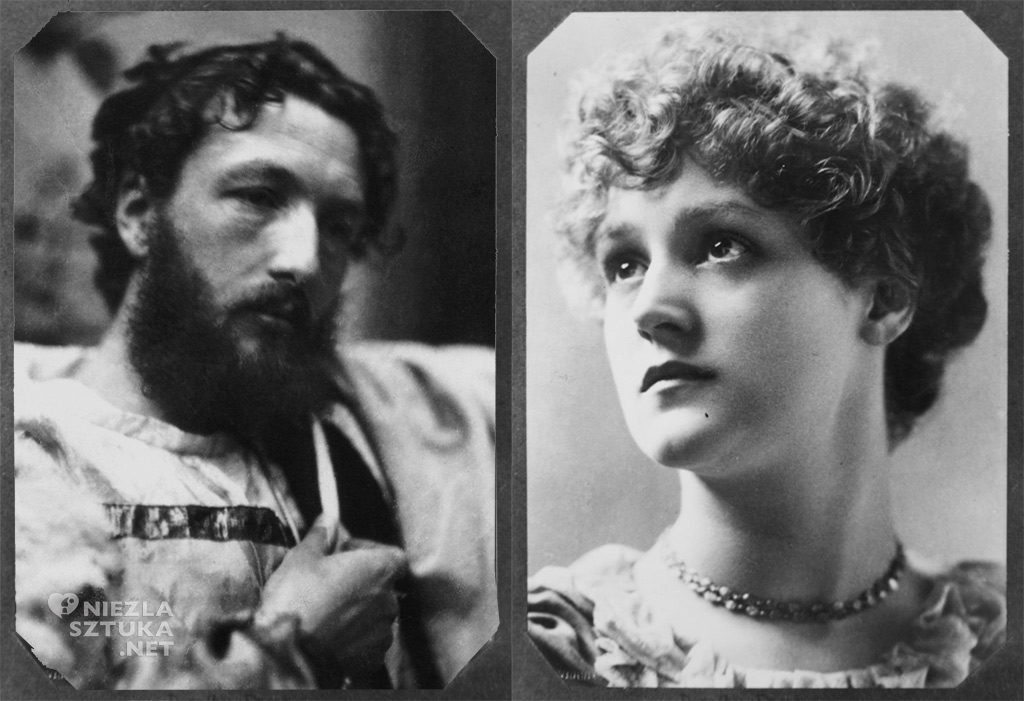
Leighton and Dorothy Dene
He was very good friends with his model Ada Pullan who later changed her name to Dorothy Dene upon Leighton's insistence that it was a better stage name for the aspiring actress. There is speculation that the playwright George Bernard Shaw modeled Professor Higgins and Eliza Doolittle in his play Pygmalion on their relationship. Newly discovered letters indicate that the relationship was likely even closer than previously suspected with a close friend referring to Dene as Leighton's "wife." Read more here.

Invocation, 1889 Private Collection

Invocation, 1889 Private Collection

Flaming June, 1895 Museo de Arte de Ponce Ponce, Puerto Rico

He designed Elizabeth Barrett Browning's tomb in Florence
He was buried in St Paul’s Cathedral in 1896.
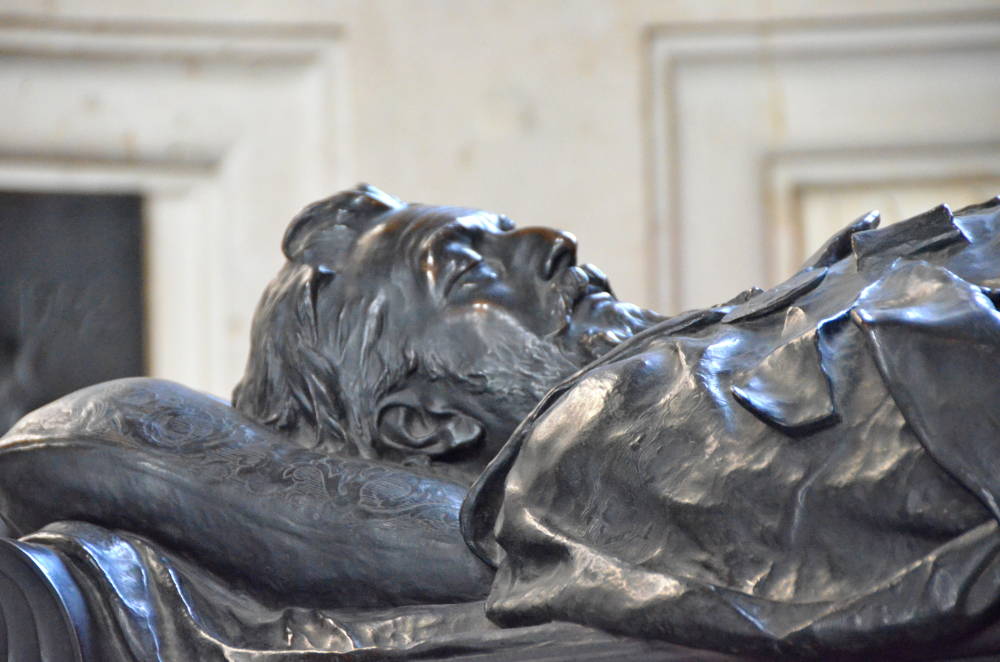

If you want more on his art you can read here.
More About Leighton House:
This dazzling house was custom built and embellished over 30 years
'He built the house as it now stands for his own artistic delight. Every stone of it had been the object of his loving care. It was a joy to him until the moment when he lay down to die.'
Leighton’s sisters in a Letter to The Times, 26 January 1899

The south facade, facing the street, was given the appearance of an Italian palazzo. The north facade overlooking the garden was dominated by the large studio window on the first floor. We didn't get to go outside into the garden but it looked lovely.
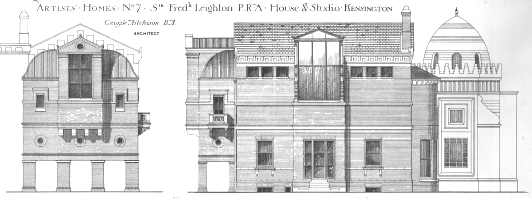
The Winter Studio
The problem of winter smogs and fogs was a concern for many artists whose year was focussed on the submission of their work to the Royal Academy at the end of March or early April. Leighton’s solution was to commission a large winter studio to be added at the east end of his main studio. Effectively a greenhouse on legs, the Winter Studio was supported by pairs of substantial cast iron columns.

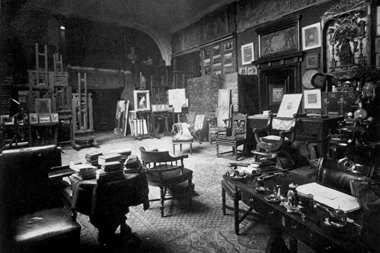
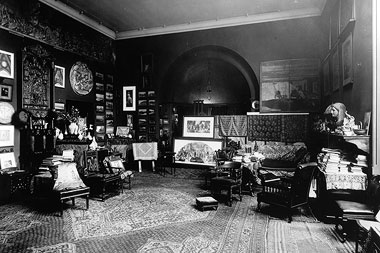
Two views of Leighton's Studio in 1880s. I searched for the once hidden staircase to the studio used only by his models accessible via a private entrance but didn't see it. If we had continued the tour I definitely would have asked for it.

Last painting was Clytie - still in his studio

Holland Circle
Leighton and G. F.Watts were the two artists at the heart of the ‘Holland Park Circle’. They were close friends and would often call on each other using a gate that connected their gardens.
Leighton House has collected 76 oil paintings by Leighton as well as 700 sketches and studies. The catalog can be found here.
Drawings include examples by Edward Burne-Jones (1833-1898), J A M Whistler and George Howard (1843-1911) and watercolours and other works on paper by George Pryce Boyce (1826-1897), Thomas Rooke (1842-1942), Evelyn De Morgan (1855-1919) and Leighton's inspirational master at the Stadelesches Kunstinstitut, Edward von Steinle (1810-1886).
Also included is a group of photographs by Julia Margaret Cameron (1815-1879) whose family had close associations with the Holland Park artist's colony.
Much love to Leighton House for such wonderful info
https://www.rbkc.gov.uk/subsites/museums/leightonhousemuseum/aboutthehouse/aboutleightonhouse/historyofthehouse.aspx

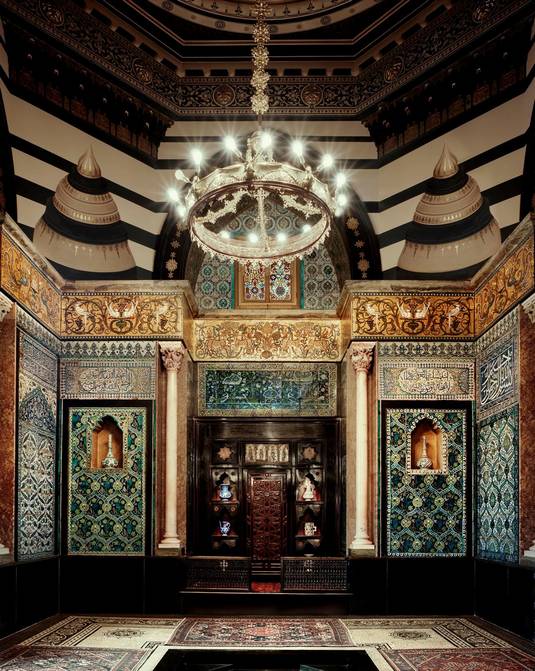

No comments:
Post a Comment